Nucleotide excision repair of a DNA interstrand cross-link produces single- and double-strand breaks
- PMID: 20000382
- PMCID: PMC2804059
- DOI: 10.1021/bi901603h
Nucleotide excision repair of a DNA interstrand cross-link produces single- and double-strand breaks
Abstract
The DNA radical resulting from formal abstraction of a hydrogen atom from the thymidine methyl group, 5-(2'-deoxyuridinyl)methyl radical, forms interstrand cross-links with the opposing 2'-deoxyadenosine. This is the first chemically characterized, radical-mediated cross-link between two opposing nucleotides. In addition, cross-linking between opposing bases in the duplex is less common than between those separated by one or two nucleotides. The first step in cross-link repair was investigated using the UvrABC bacterial nucleotide excision repair system. UvrABC incised both strands of the cross-linked DNA, although the strand containing the cross-linked purine was preferred by the enzyme in two different duplexes. The incision sites in one strand were spaced 11-14 nucleotides apart, as is typical for UvrABC incision. The majority of incisions occur at the third phosphate from the 3'-side of the cross-link and eighth or ninth phosphate on the 5'-side. In addition, cleavage was found to occur on both strands, producing double-strand breaks in approximately 25-29% of the incision events. This is the first example of double-strand cleavage during nucleotide excision repair of cross-linked DNA that does not already contain a strand break in the vicinity of the cross-link.
Figures
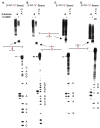
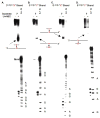


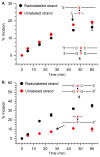
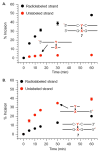
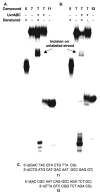





Similar articles
-
Double-strand break formation during nucleotide excision repair of a DNA interstrand cross-link.Biochemistry. 2009 Aug 18;48(32):7565-7. doi: 10.1021/bi901006b. Biochemistry. 2009. PMID: 19606890 Free PMC article.
-
Nucleotide excision repair of chemically stabilized analogues of DNA interstrand cross-links produced from oxidized abasic sites.Biochemistry. 2014 Sep 23;53(37):5958-65. doi: 10.1021/bi500914d. Epub 2014 Sep 10. Biochemistry. 2014. PMID: 25208227 Free PMC article.
-
DNA base composition determines the specificity of UvrABC endonuclease incision of a psoralen cross-link.J Biol Chem. 1990 Feb 25;265(6):3489-96. J Biol Chem. 1990. PMID: 2303457
-
Preparation of interstrand cross-linked DNA oligonucleotide duplexes.Front Biosci. 2004 Jan 1;9:421-37. doi: 10.2741/1246. Front Biosci. 2004. PMID: 14766379 Review.
-
A role for the base excision repair enzyme NEIL3 in replication-dependent repair of interstrand DNA cross-links derived from psoralen and abasic sites.DNA Repair (Amst). 2017 Apr;52:1-11. doi: 10.1016/j.dnarep.2017.02.011. Epub 2017 Feb 20. DNA Repair (Amst). 2017. PMID: 28262582 Free PMC article. Review.
Cited by
-
DNA damage by reactive species: Mechanisms, mutation and repair.J Biosci. 2012 Jul;37(3):503-17. doi: 10.1007/s12038-012-9218-2. J Biosci. 2012. PMID: 22750987 Review.
-
Investigation of bacterial nucleotide excision repair using single-molecule techniques.DNA Repair (Amst). 2014 Aug;20:41-48. doi: 10.1016/j.dnarep.2013.10.012. Epub 2014 Jan 25. DNA Repair (Amst). 2014. PMID: 24472181 Free PMC article. Review.
-
Photochemical Generation of Benzyl Cations That Selectively Cross-Link Guanine and Cytosine in DNA.Org Lett. 2016 Jun 3;18(11):2544-7. doi: 10.1021/acs.orglett.6b00755. Epub 2016 May 18. Org Lett. 2016. PMID: 27191599 Free PMC article.
-
Mammalian nucleotide excision repair proteins and interstrand crosslink repair.Environ Mol Mutagen. 2010 Jul;51(6):520-6. doi: 10.1002/em.20569. Environ Mol Mutagen. 2010. PMID: 20658645 Free PMC article. Review.
-
RecA and RecB: probing complexes of DNA repair proteins with mitomycin C in live Escherichia coli with single-molecule sensitivity.J R Soc Interface. 2022 Aug;19(193):20220437. doi: 10.1098/rsif.2022.0437. Epub 2022 Aug 10. J R Soc Interface. 2022. PMID: 35946163 Free PMC article.
References
-
- Dedon PC. The Chemical Toxicology of 2-Deoxyribose Oxidation in DNA. Chem Res Toxicol. 2008;21:206–219. - PubMed
-
- Cadet J, Douki T, Ravanat JL. Oxidatively Generated Damage to the Guanine Moiety of DNA: Mechanistic Aspects and Formation in Cells. Acc Chem Res. 2008;41:1075–1083. - PubMed
-
- Greenberg MM. Elucidating DNA Damage and Repair Processes by Independently Generating Reactive and Metastable Intermediates. Org Biomol Chem. 2007;5:18–30. - PubMed
-
- Dizdaroglu M, Jaruga P, Rodriguez H. Oxidative damage to DNA: mechanisms of product formation and measurement by mass spectrometric techniques. Crit Rev Oxidative Stress and Aging. 2003;1:165–189.
Publication types
MeSH terms
Substances
Grants and funding
LinkOut - more resources
Full Text Sources

